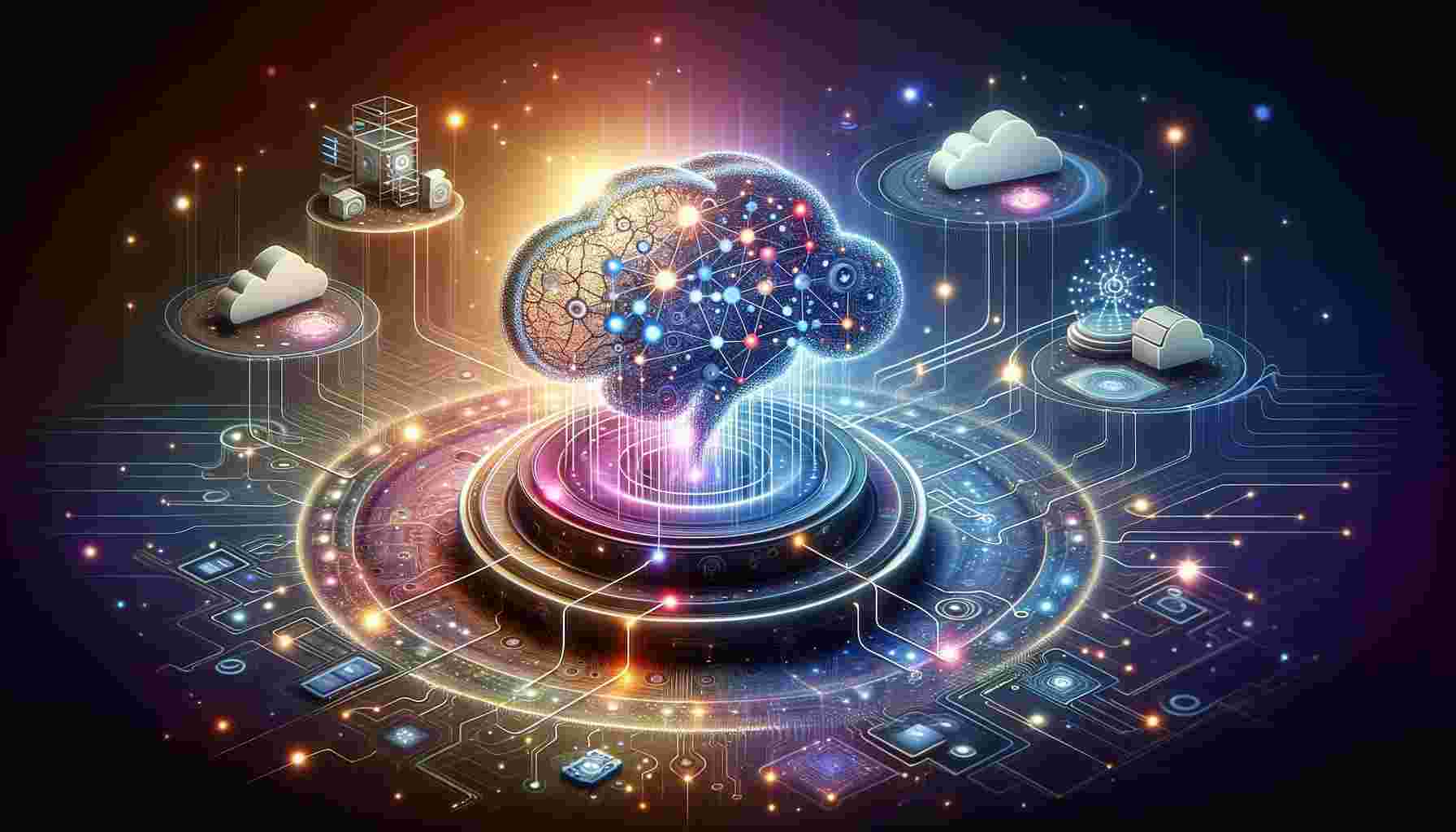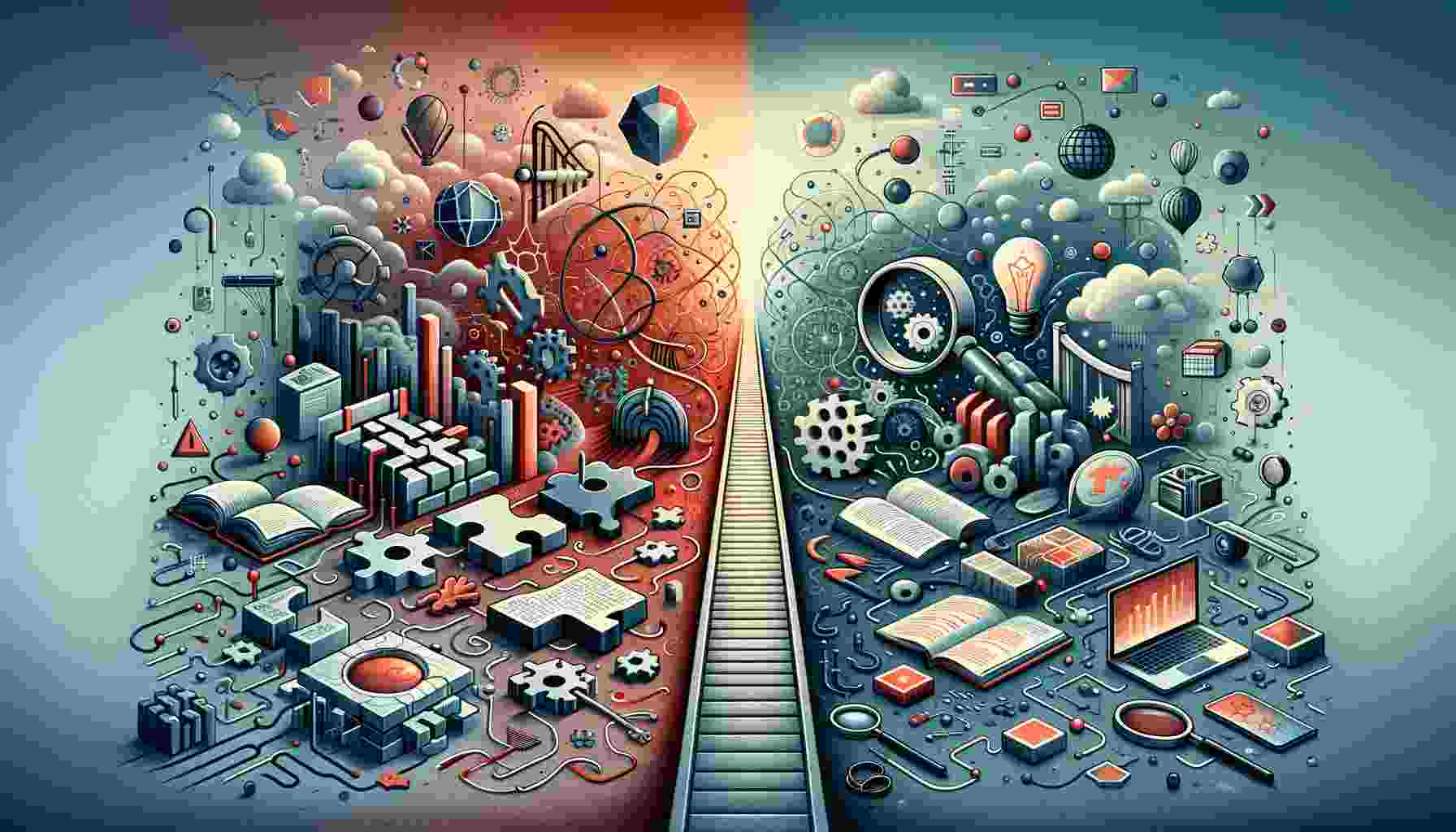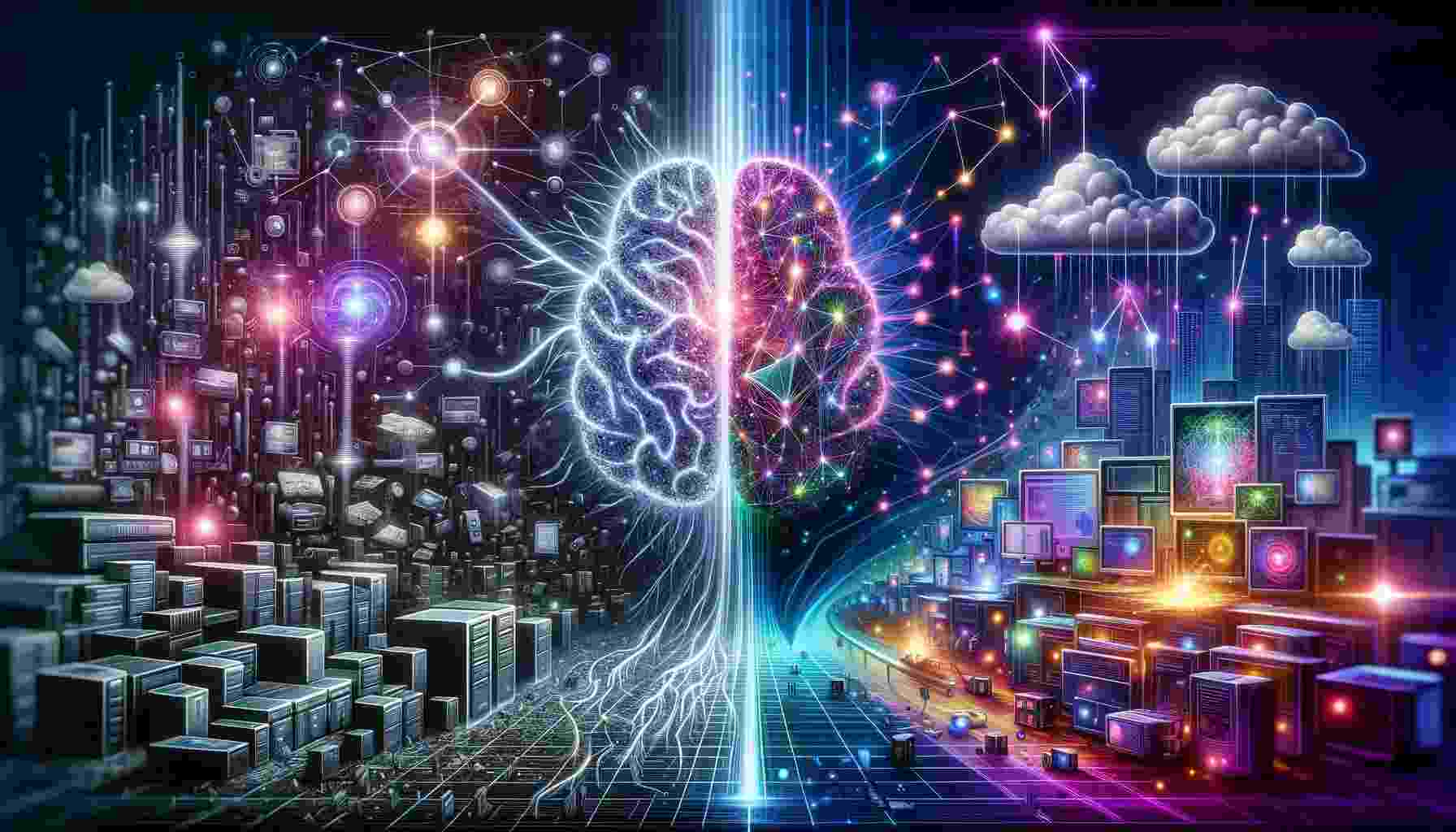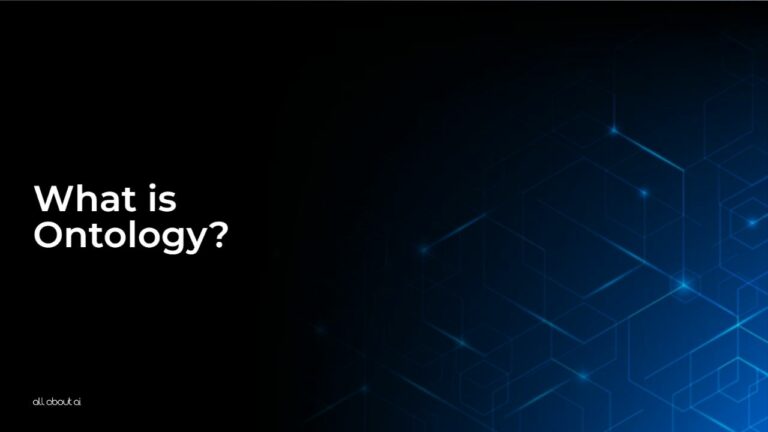What is ontology in AI? Simply put, it refers to a structured framework that categorizes and organizes information. It forms the backbone of intelligent systems, enabling them to understand and process complex data by defining hierarchical relationships and establishing clear associations among different concepts.
Looking to learn more about ontologies in AI? Read this article written by the AI savants at All About AI.
How Do Ontologies Drive Data Management in AI?
Ontologies play a pivotal role in AI data management by providing a common understanding of data. Here’s how they drive data management in AI.

Understanding Ontologies in AI:
Ontologies in artificial intelligence are structured frameworks that define and categorize concepts and relationships within a specific domain. They serve as the backbone for intelligent systems to understand, process, and interpret complex data.
This structured approach is essential in the AI landscape, where data from varied sources and formats must be analyzed coherently.
Enhancing Data Interpretation and Integration:
Ontologies contribute significantly to data management by providing a shared vocabulary for different systems. This common language allows for more effective data integration, especially when dealing with heterogeneous data sources.
By defining clear relationships and hierarchies, ontologies enable AI systems to interpret complex datasets accurately, ensuring consistency and reliability in data handling.
Facilitating Advanced Data Analysis:
The structured nature of ontologies aids in complex data analysis tasks such as semantic querying and reasoning. AI systems can leverage ontologies to draw inferences, identify patterns, and generate insights that would be challenging with traditional data management approaches.
This capability is particularly valuable in fields like healthcare, finance, and e-commerce, where nuanced data interpretation is crucial.
What are the Advantages and Disadvantages of Using Ontologies in AI?
Advantages of Ontologies in AI
- Ontologies offer a clear and structured way to represent data, enhancing its quality and interpretability.
- They facilitate communication and data sharing among various AI systems, promoting collaboration and efficiency.
- Ontologies can easily adapt to new data types and sources, ensuring the scalability of AI applications.
- The structured data approach aids AI systems in making more informed and accurate decisions.
Disadvantages of Ontologies in AI
- Building comprehensive ontologies requires significant effort and expertise, often making it a resource-intensive process.
- Highly specific ontologies might not easily adapt to new or evolving data scenarios.
- Keeping ontologies current with the latest data and trends requires continuous effort.
- Over-reliance on specific ontologies can lead to overfitting, where AI models perform well on known data but poorly on new, unseen data.
Exploring Ontology Learning in AI
As AI systems are increasingly tasked with processing large volumes of diverse and complex data, the need for accurate and adaptable ontologies becomes crucial.
Ontology learning addresses this need by automating the process of ontology creation, ensuring that AI systems have up-to-date and relevant frameworks to interpret data effectively.
Core Processes in Ontology Learning:
- Extraction: This initial step involves identifying relevant concepts, properties, and relationships from raw data sources. Techniques like text analysis and pattern recognition are used to extract these elements.
- Synthesis: The extracted elements are then synthesized to form a coherent ontology. This involves organizing the concepts and relationships into a structured format that is understandable by AI systems.
- Refinement: The created ontology is continually refined and updated. This process uses feedback mechanisms to adapt the ontology based on new data or changes in the domain.
Techniques in Ontology Learning:
- Natural Language Processing (NLP): NLP techniques are used to extract meaningful information from text, crucial for developing ontologies from unstructured data sources.
- Machine Learning Approaches: Supervised and unsupervised machine learning techniques help in identifying patterns and relationships that inform the structure of the ontology.
- Rule-Based Methods: These involve predefined rules for ontology construction, often used in combination with machine learning techniques for better accuracy.
- Crowdsourcing and Collaborative Approaches: Leveraging the knowledge and input of a large number of users can significantly enhance the quality and relevance of the developed ontology.
What are the Key Challenges and Methods in Ontology Learning?
Here are some of the key challenges posed by ontology learning.

Handling Ambiguous and Incomplete Data:
A major challenge in ontology learning is dealing with ambiguous and incomplete data. When the source material lacks clarity or is fragmentary, it becomes difficult for AI systems to extract accurate and meaningful information.
This ambiguity can lead to misinterpretations or incomplete ontologies, which in turn can affect the performance of AI applications relying on these ontologies for data processing and decision-making.
Adapting to Evolving Domains:
Ontologies need to stay relevant and accurate as the domains they represent evolve. This challenge is pronounced in rapidly changing fields like technology and medicine, where new concepts and relationships are constantly emerging.
Ensuring that ontologies are regularly updated and expanded to encompass these changes requires sophisticated learning algorithms and ongoing human oversight.
Integrating Diverse Data Sources:
Another challenge is integrating diverse data sources into a coherent ontology. This is particularly tough when dealing with heterogeneous data types, such as combining structured data from databases with unstructured data from texts or social media.
The process demands advanced techniques to ensure that the resulting ontology is comprehensive and does not lose critical information from any of the sources.
Now, we’ll discuss the key methods of ontology learning.
Rule-Based Methods:
Rule-based methods in ontology learning involve using a set of predefined rules to identify and categorize data. These rules are often crafted by domain experts and are based on the logical structuring of data.
While this method is precise and reliable for well-understood domains, it lacks flexibility and may not adapt well to changes in data or domain specifics.
Machine Learning Approaches:
Machine learning approaches in ontology learning leverage algorithms to identify patterns and relationships in data.
These methods can range from supervised learning, where the system is trained on a labeled dataset, to unsupervised learning, where the system identifies structures in the data independently.
Machine learning methods are more adaptable to changes and can handle large volumes of data effectively.
Semantic Similarity Techniques:
Semantic similarity techniques focus on understanding and quantifying the likeness and relationships between different concepts in a dataset.
These methods use various metrics to assess how closely related different terms or concepts are, based on their context and usage.
This approach is particularly useful in refining and expanding existing ontologies by identifying new relationships or redefining existing ones based on evolving data patterns.
Evaluating Ontology Learning: Key Metrics
In ontology learning, evaluating the quality and effectiveness of the developed ontologies is crucial. These key metrics play a pivotal role:
Accuracy and Precision:
This measures how well the ontology represents the underlying data and relationships. High accuracy and precision are vital for reliable AI applications.
Completeness:
Completeness assesses whether the ontology covers all necessary concepts and relationships within the domain. It ensures that AI systems have comprehensive domain knowledge.
Consistency:
This metric checks for logical coherence in the ontology, ensuring there are no internal contradictions. Consistent ontologies maintain the integrity of AI processes.
Adaptability:
Adaptability evaluates the ontology’s ability to incorporate new information and adapt to changes, ensuring long-term relevance in dynamic environments.
The Impact of Ontology in Advancing AI

Ontologies significantly contribute to the advancement of AI by enhancing data understanding and enabling more sophisticated and accurate AI applications.
They are instrumental in fields like natural language processing, semantic search, and knowledge management, pushing the boundaries of what AI can achieve.
Want to Read More? Explore These AI Glossaries!
Begin your adventure in artificial intelligence with our well-chosen glossaries. Catering to all levels, you will constantly find new things to learn!
- What is Activation Function?: An activation function, in the context of AI, is a mathematical operation applied to the output of each node in a neural network.
- What is Adaptive Algorithm?: In the world of Artificial Intelligence (AI), an adaptive algorithm is a computational tool designed to adjust its behavior in response to changing input data or environmental conditions.
- What is Admissible Heuristic?: Adaptive Neuro Fuzzy Inference System (ANFIS) is a pioneering AI model seamlessly merging fuzzy logic and neural networks.
- What is Affective Computing?: An admissible heuristic plays a critical role in guiding artificial intelligence decision-making processes.
FAQs
How does ontology differ from a traditional database in AI?
What role does ontology play in natural language processing (NLP) in AI?
Can ontology be adapted for different domains in AI?
How does ontology contribute to AI system interoperability?
Can individuals contribute to the development of ontologies in AI?
Final Words
Ontology in AI is more than a technical concept; it’s a linchpin in the evolution of intelligent systems. By fostering better data management, enhancing understanding, and bridging gaps between disparate systems, ontologies are indispensable in the journey towards more advanced and effective AI solutions.
This article was written to answer the question, “what is ontology,” examining its key metrics, impact, and methods, among other aspects. If you’re looking to learn more about the ever-evolving field of AI, keep reading through the articles in our AI Definitions Guide.





